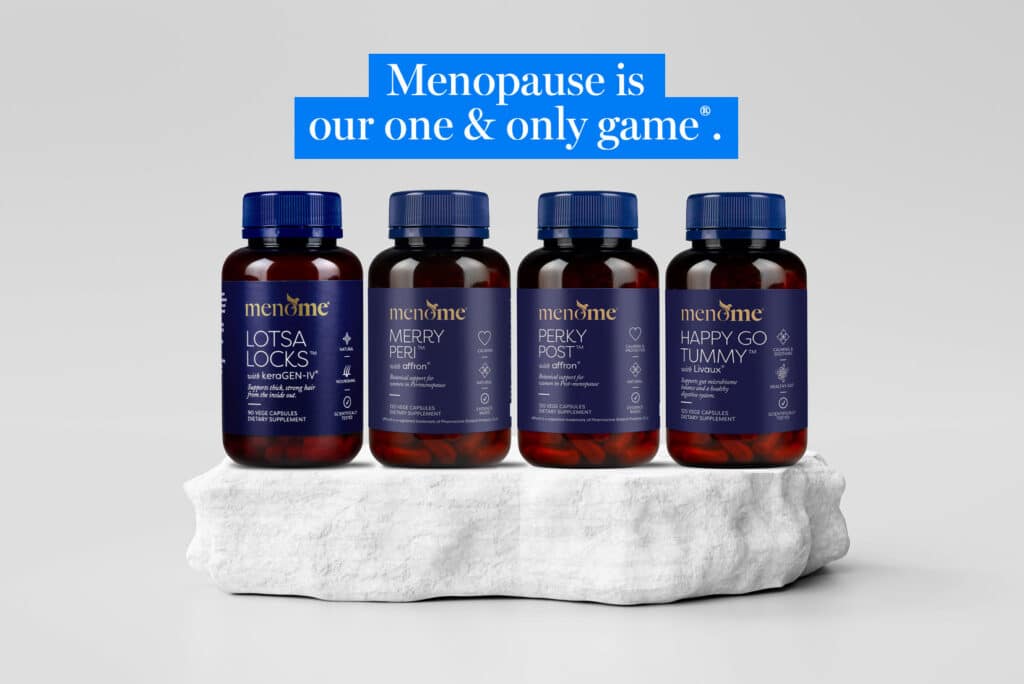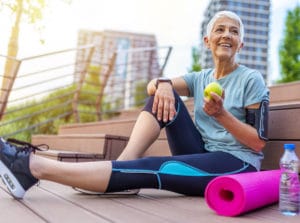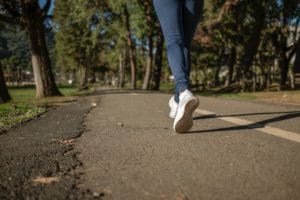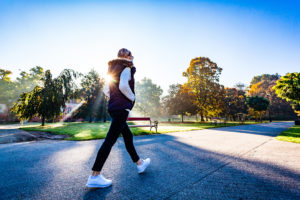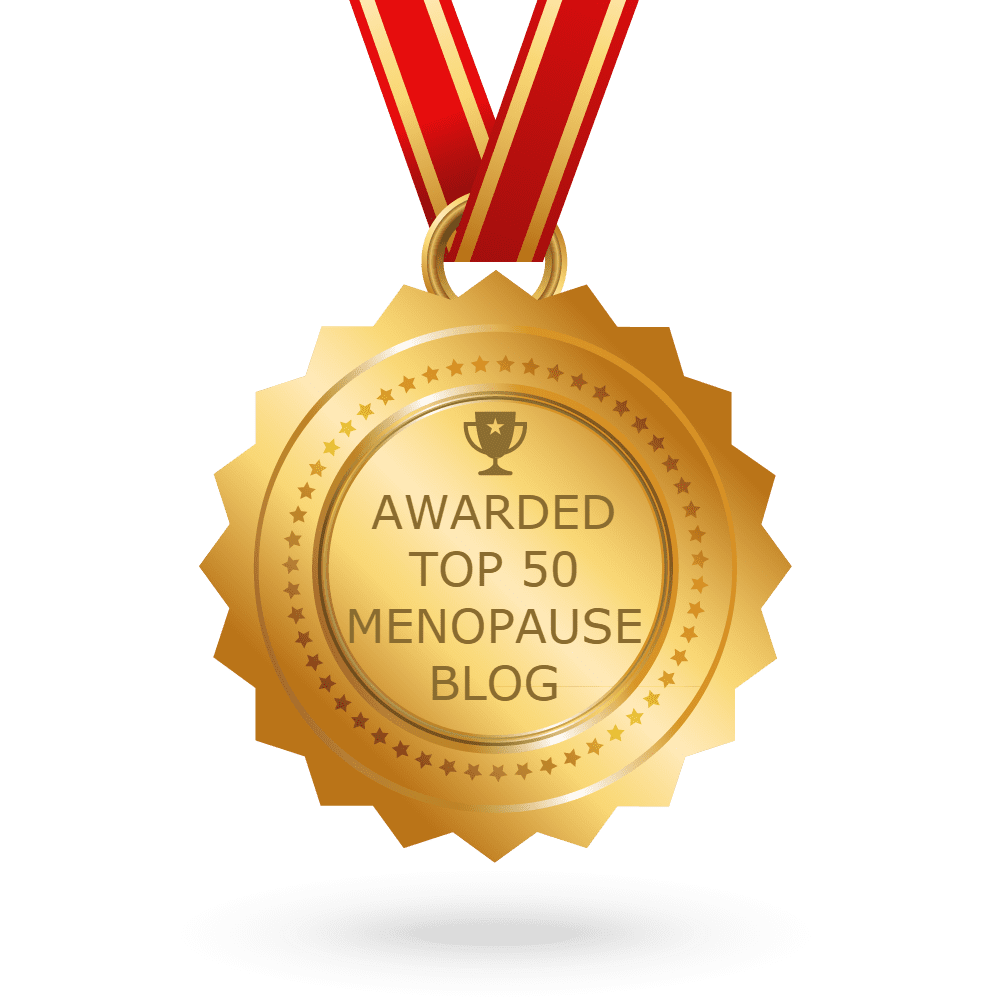Why Interval Training Is The Best Form Of (Cardio) Exercise For Menopause
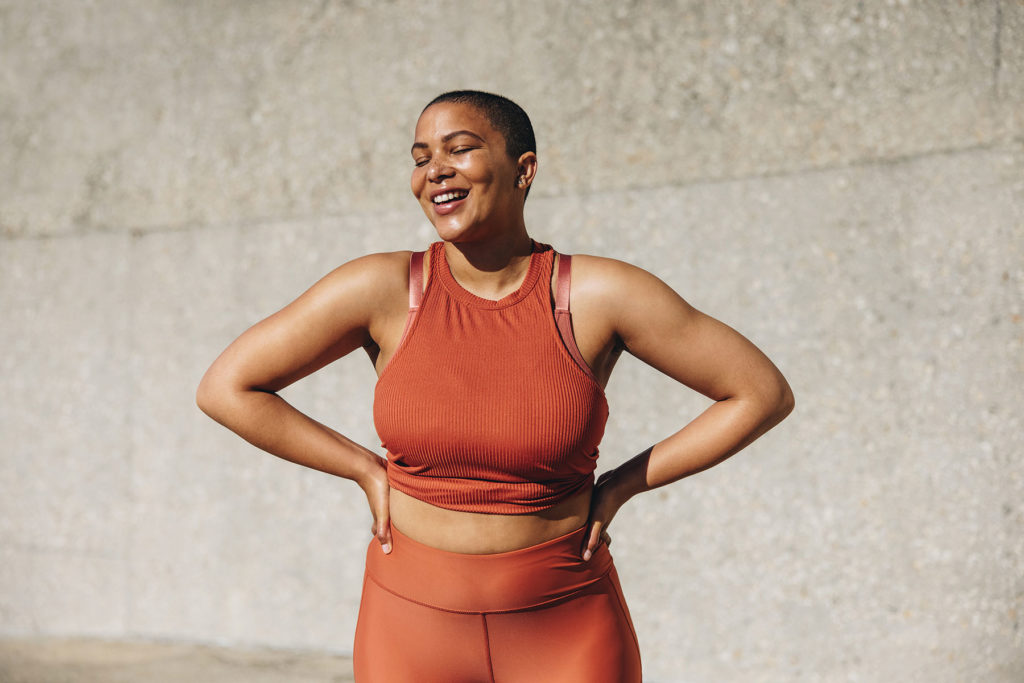
This is an extra-special piece about exercise in menopause or, more specifically, interval training and menopause. We’ve garnered wisdom from Dr Stacy Sims books; Dr Sims describes herself as a forward-thinking international exercise physiologist and nutrition scientist. And there’s no doubt she knows her stuff! Further, she’s on a mission to teach athletic women and avid exercisers that menopause doesn’t need to stop them in their tracks.

Interval training & menopause
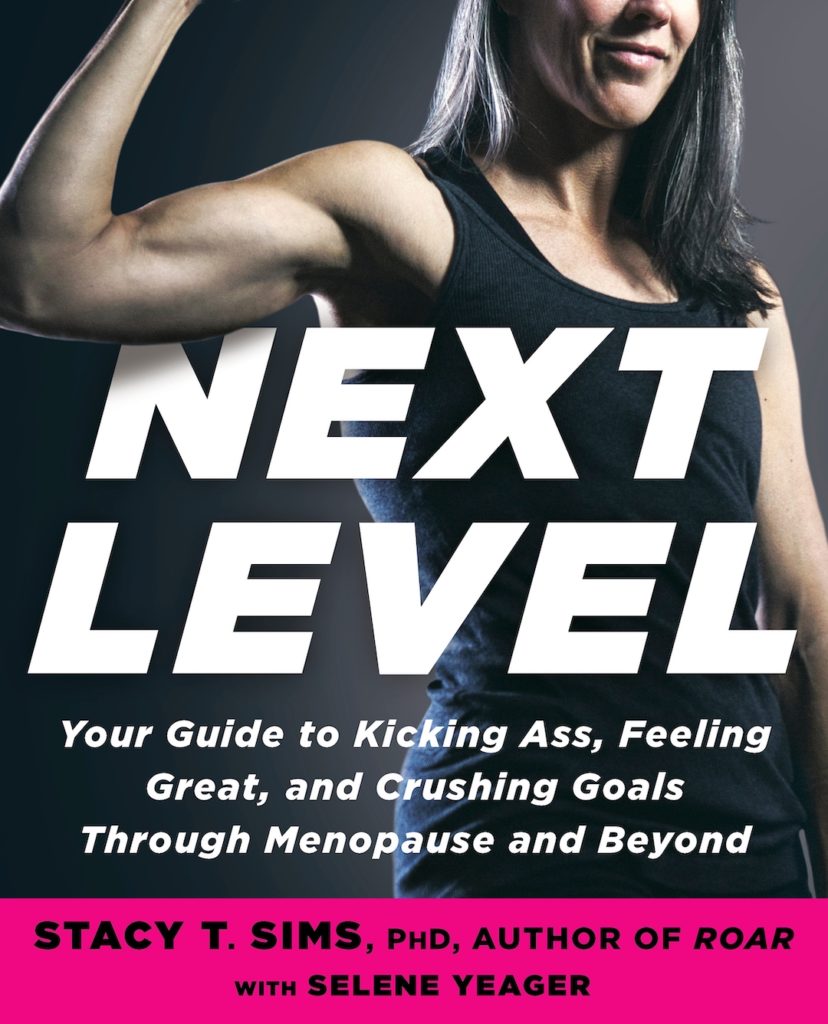
We first looked at her latest book with Selene Yeager: Next Level, Next Level, Your Guide To Kicking Ass, Feeling Great, and Crushing Goals Through Menopause and Beyond here. And it’s just so darn good we had to share some more. Even if you’re not an athlete or avid exerciser you will learn a lot about your body. And she explains interval training and menopause super well.
(In fact, it’s so good we’ve got a copy for one of you to win. Details at the end.)
Because we often refer to the positive research behind high-intensity interval training (HIIT) for women in perimenopause/post-menopause we’ve focused on the chapter covering this. Or more specifically, sprint-interval training (SIT) which Stacy says is the best option for interval training and menopause. And let’s face it, she’s an expert in her field so she should know. So let’s get into it…
Related: Recommended Books
Explaining sprint interval training & menopause
Stacy begins,
“For menopausal women, high-intensity sprint interval training sessions can provide the metabolic stimulus to trigger the performance-boosting body composition changes that our hormones helped us achieve in our premenopausal years.”
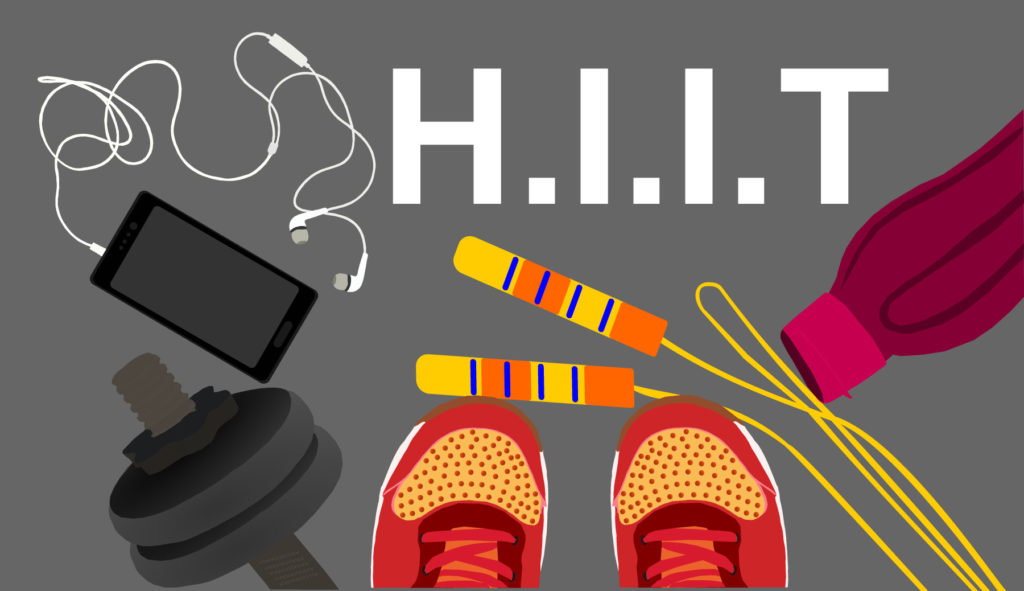
She explains that the key here is the intensity. “In high-intensity interval training (HIIT), short bursts of hard exercise are followed by relatively short recovery periods. So, if you’re using heart rate as a guide, anything that sends your heart rate about 85% of your maximum is high intensity. When you reach your menopausal years, it’s very important to incorporate the shortest, sharpest form of HIIT: sprint interval training (SIT).
As the term indicates, SIT sessions include super-short 10-30-second sprint style efforts.”
The benefits of SIT for peri- and post-menopausal women
Stacy says that one of the biggest benefits of SIT interval training and menopause is improvement in body composition.
“SIT training increases lean muscle mass and reduces fat mass in a relatively short period of time. In a 2010 study published in Medicine & Science in Sports & Exercise1, researchers had a group of post-menopausal women, ages 47 to 59, perform 20-minute bouts of SIT – alternating eight seconds of sprinting on a stationary bike at about 85 percent of their maximum heart rate with 12 seconds of easy pedaling – three times a week for eight weeks. By the study’s end, the women had lost fat, regained lean muscle mass, and improved their aerobic fitness by 12 percent after what amounted to only eight hours of actual exercise over eight weeks.”
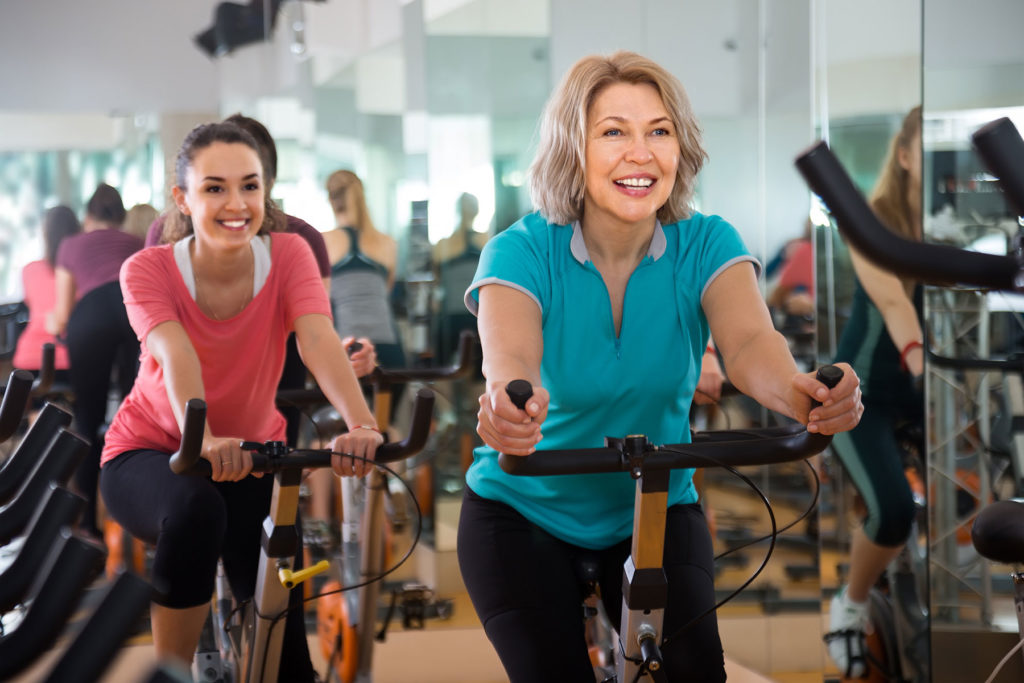
“SIT helps burn off belly fat and improve body composition on a couple of fronts. For one, it coaxes your body into burning more fat for energy when you’re not exercising. As you reach perimenopause, your body burns less fat at rest and stores more of it. SIT turns that around,” she adds.
“SIT training strengthens and increases the amount of your energy-producing mitochondria, improves insulin sensitivity, and lowers fasting blood sugar levels, all of which is good for your overall cardiovascular and metabolic health. Your mitochondria tend to become less functional over time – regardless of menopause – and HIIT training can help keep them running on all cylinders. A Mayo Clinic study published in Cell Metabolism2 found that the mitochondrial function of older exercises (65 to 80) soared 69 percent after 12 weeks of regular HIIT training. The older exercisers, both male and female, saw no mitochondrial gains following lower-intensity programs.”
Stacy goes on to say that even though SIT is super-hard and your legs (and brain) may be screaming for you to stop, it is a fantastic stress-reducer (once you’re done, that is!). “That’s good not only for your mental health but also for your physical health, including reducing abdominal fat,” she says.
“Remember, levels of your stress hormone, cortisol, rise during menopause. That sets you up for a vicious cycle of storing belly fat, which produces more inflammation and stress. In fact, deep belly fat has about four times as many cortisol receptors as the regular fat that sits under your skjn. So not only does deep belly fat trigger more cortisol production, it also leads to more belly fat storage. SIT breaks this cycle. When you do SIT, your body pumps out more human growth hormone (HGH), increases testosterone, decreases estrone (the less desirable form of estrogen produced by fat tissue) and counteracts cortisol.”
SIT interval training & menopause: how to do SIT
The main factors that Stacy points out are the importance of not overdoing it and ensuring you recover properly. She also emphasises that you must always warm up thoroughly for 10 to 15 minutes before starting and cool down for a couple of minutes when you’re done.
“The key to SIT is not overdoing it. High-intensity training is strong medicine. The right dose works wonders; too much can backfire and have ill effects,” says Stacy.
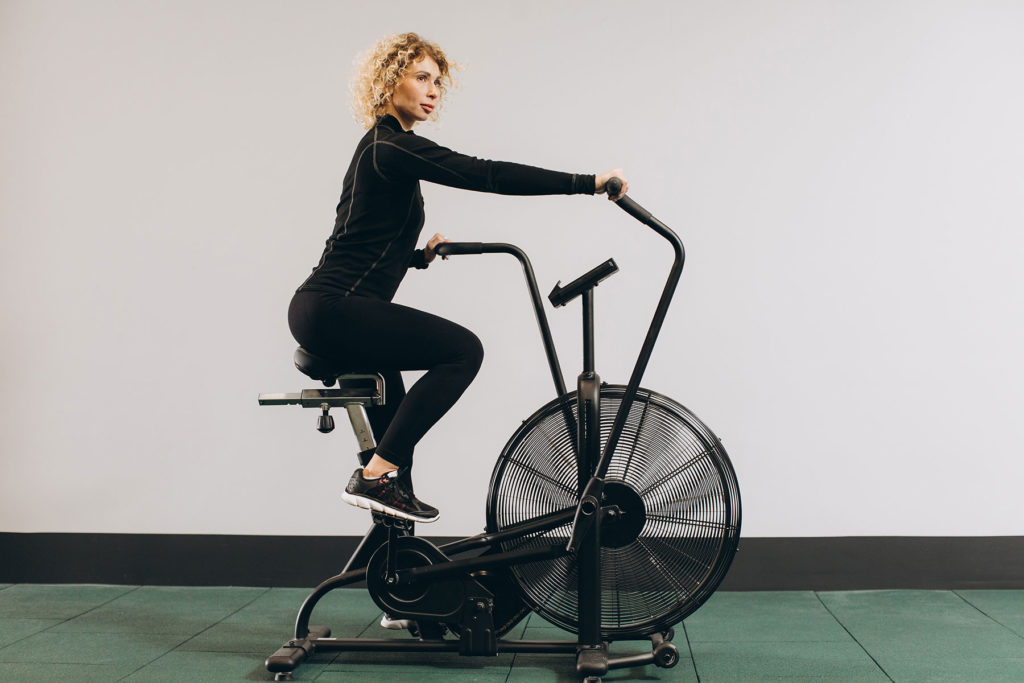
If you’re an athlete she recommends that during your off-season, when you’re not out running, riding, hiking or doing big events, you do up to three SIT workouts a week, so long as you allow your body ample recovery time to bounce back week to week.
“Generally speaking, however, two sessions a week are enough. During months when you’re busy with lots of activity and going hard on the weekends, you can dial it back to one session a week to stay sharp.
Pick the type of exercise that works best for you. If you’re not a runner you obviously don’t want to hit the track and start sprinting out of the gate! In fact, some research suggests that, in post-menopausal women, high-intensity cycling sessions are more effective than running, probably because it’s easier to hit those really high intensities while cycling, without putting undue strain on your muscles and connective tissues.”
Stacy is in demand for her talk Women Are Not Small Men which you can watch here.
Conclusion
Other gems Stacy shares throughout the book include advice on lifting heavy weights included in the chapter “Now’s The Time To Life Heavy Sh*t!” She states that muscles are your engine and we all (men and women) lose muscle and strength with age. She also advocates eating more, avoiding popular diets such as keto and embracing plant-based foods. All good advice for whatever stage of menopause you are at.
There is a lot of gold in this book for athletes and non-athletes alike and as much as we would like to share it with you all we can’t.
But you can purchase it online here (international), here (Australia) and here (New Zealand).
Read: 7 Reasons Strength Training Is Vital For Women In Midlife
WIN, WIN, WIN!
Annnnnd, one of you has the opportunity to win a copy of Next Level, Your Guide To Kicking Ass, Feeling Great, and Crushing Goals Through Menopause and Beyond.
THIS COMPETITION IS NOW CLOSED
To go in the draw to win a copy of Dr Stacy Sims Book 'Next Level', sign up to our mailing list before midnight 27th September 2022!
Already subscribed to our mailing list? That’s okay, fill out the form so we know you want to enter, and we will include you in the draw!
About Dr Stacy Sims
STACY T. SIMS, MSC, PHD, is a forward-thinking international exercise physiologist and nutrition scientist who aims to revolutionize exercise nutrition and performance for women.
She has directed research programs at Stanford, AUT University, and the University of Waikato, focusing on female athlete health and performance and pushing the dogma to improve research on all women.
Her contributions to the international research environment and the sports nutrition industry has established a new niche in sports nutrition; and established her reputation as the expert in sex differences in training, nutrition, and health.
Dr Sims is an American but currently lives in Mt Maunganui, New Zealand.
References:
- Boutcher, Yati N., Stephen H. Boutcher, Hye Y. Yoo and Jarrod Dl Meerkin. “the Effect of Sprint Interval Training on Body Composition of Post-menopausal Women.” Medicine and Science in Sports and Exercise 51, no. 7
- Matthew Robinson, Surendra Dasari, PhD, Adam Konopka, Matthew L. Johnson, Manjunatha Shankarappa, M., Raul Ruiz Esponda, Rickey Carter, PhD. Ian Lanza, PhD. www.newsnetwork.mayoclinic.org/discussion/mayo-clinic-discovers-high-intensity-aerobic-training-can-reverse-aging-processes-in-adults
Related:
Why You Should Exercise Less and Eat More At Menopause
The Powerful Brain-Changing Effects Of Exercise
Menopause And Why You Need To Exercise For Your Health & Your Weight

